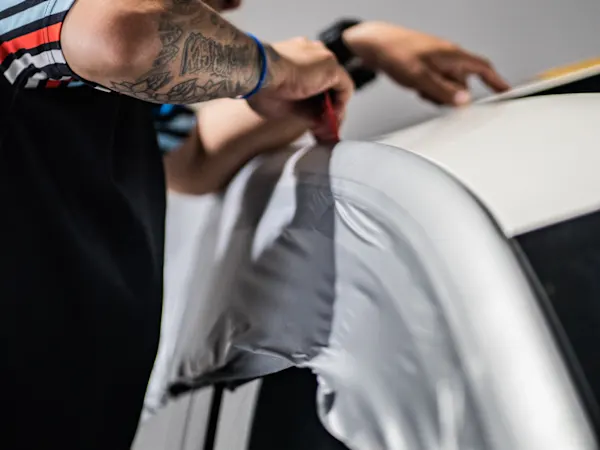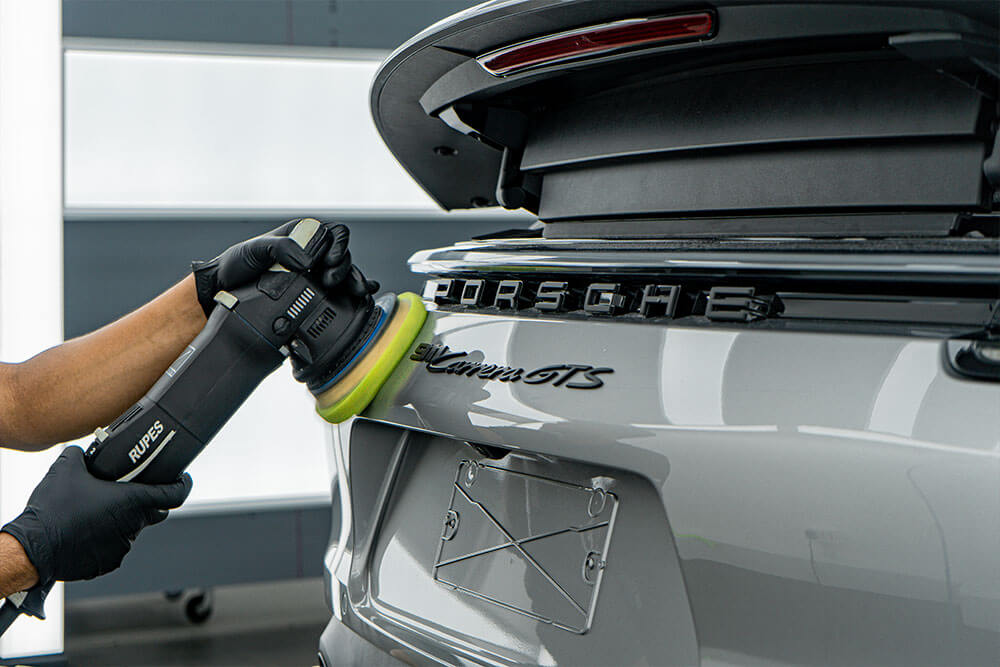
When it comes to vehicle protection and customization, two popular options often come up: Paint Protection Film (PPF) and vinyl wraps. Both offer distinct benefits, but they serve different purposes and are made from unique materials. Understanding the key differences between PPF and vinyl wraps can help you make an informed decision based on your needs. While both are designed to enhance your car’s appearance, their functions, applications, and benefits vary considerably.
Purpose: Protection vs. Appearance
The primary distinction between PPF and vinyl wraps lies in their purpose.
PPF, as the name suggests, is designed primarily to protect the vehicle’s paint from damage. It acts as a shield against road debris, stone chips, bird droppings, and even minor scratches. Its protective properties help preserve the original paintwork, keeping the vehicle looking brand new for a longer period.
On the other hand, vinyl wraps are used primarily for cosmetic purposes. Vinyl wraps allow for complete customization of a car’s exterior, offering a wide range of colors, finishes, and textures. Vehicle owners often choose vinyl wraps for aesthetic appeal, whether to change the car’s color or add a unique design. While vinyl wraps do provide some degree of protection against minor scratches or fading, their primary role is in altering the vehicle’s appearance.
Material Composition: Durability and Flexibility
The materials used in PPF and vinyl wraps also differ significantly, contributing to their distinct characteristics.
PPF is made from a clear, durable polyurethane film. It is specifically engineered to absorb the impact of road debris, offering self healing properties. When minor scratches appear on PPF, the material can heal itself under heat, restoring its smooth, flawless surface. This makes PPF an excellent choice for long-term protection.
Vinyl wraps, in contrast, are typically made from a flexible, adhesive backed PVC (polyvinyl chloride) material. The vinyl is designed to conform to the shape of the vehicle’s body, providing a custom fit. While vinyl wraps can be durable, they do not offer the same self-healing properties as PPF. Over time, vinyl wraps can start to peel, fade, or show signs of wear, especially if exposed to harsh conditions like UV rays or high temperatures.
Durability and Longevity
In terms of durability, PPF generally outperforms vinyl wraps. The clear, thick nature of PPF ensures that it offers long-lasting protection against damage from debris, bugs, and environmental factors. A high-quality PPF can last anywhere from 5 to 10 years, depending on the conditions the vehicle is exposed to. Even after years of use, PPF will not degrade as quickly as vinyl, and it can maintain its protective abilities for a much longer time.
Vinyl wraps can last anywhere from 3 to 7 years, depending on the quality of the material, maintenance, and exposure to the elements. The lifespan of a vinyl wrap is generally shorter than PPF, particularly because it is more susceptible to fading, cracking, or peeling over time. If the vehicle is regularly exposed to harsh sun, rain, or extreme temperatures, the vinyl may begin to show signs of aging much sooner than PPF.
Installation: Complexity and Expertise
Installing both PPF and vinyl wraps requires skill, but the processes are different.
PPF installation is generally more intricate because the film needs to be applied precisely to cover specific areas of the vehicle without leaving any gaps or wrinkles. Professionals use specialized tools and techniques, including heat guns, to ensure the film adheres properly to the surface and provides a flawless finish.
Vinyl wraps require a similar level of precision, but the process is often more focused on aesthetic design. The film must be carefully applied to ensure that no air bubbles or wrinkles remain. Vinyl wraps are sometimes easier to install compared to PPF, but this depends on the complexity of the design. While some car owners may attempt to apply a vinyl wrap themselves, the best results come from professional installation.
Cost Considerations
When considering cost, PPF is generally more expensive than vinyl wraps due to its protective properties and the higher quality materials involved. The cost of PPF installation can vary based on the size of the vehicle and the complexity of the application.
Vinyl wraps tend to be more affordable, especially for a full vehicle wrap. The cost will depend on the quality of the vinyl and the complexity of the design. Custom graphics or special finishes like matte or satin can increase the price.
Conclusion
In the end, choosing between PPF and vinyl wrap depends on what you value most whether it’s long-lasting protection or the ability to change your car’s appearance. PPF is the ideal choice for those looking to safeguard their vehicle’s paint from damage while maintaining its original look. For those who want to completely transform their vehicle’s exterior with a fresh color or unique design, vinyl wraps offer an excellent solution. By understanding the differences, you can make an informed decision that suits your car’s needs and your personal preferences.


